Ventilation of a room with gas-using equipment: design standards + arrangement rules
Gas appliances are increasingly being used not only in industrial buildings, but also in private houses or apartments. It can be both domestic stoves, and water heaters, heating boilers installed in kitchens or boiler rooms.
You must admit that properly designed ventilation of a room with gas-using equipment that creates uninterrupted air circulation can ensure the safety and correct operation of the equipment. But non-compliance with regulatory requirements and operating rules may entail a danger to human life.
Next, we will describe how ventilation is equipped in rooms with various gas-using equipment and what is needed for its arrangement.
The content of the article:
Regulatory Requirements for Air Recirculation
In any premises with gas equipment should be provided for natural, continuously operating ventilation, providing a minimum of three times air exchange in 1 hour. The speed of circulation of air masses is measured by anemometer.
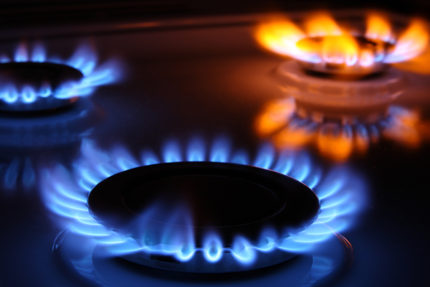
It is possible to calculate the required amount of incoming oxygen for rooms where gas equipment is used by the formula:
L =NxVwhere
L - air flow, m3 / h;
N - normalized rate of air exchange (for rooms with gas equipment, this indicator = 3);
V is the volume of the room, m3.
Air exchange rates are regulated SP-60.13330.2016, GOST-R-EN-13779-2007, GOST-22270-2018. They apply to the design of new, reconstructed and expandable gas supply systems.
Key rules are prescribed by the following points:
- at installation of gas boilers it is important to take into account the requirements not only for the boiler room itself, but also the standards for ensuring the operation of the ventilation system;
- gas pipelines cannot cross ventilation ducts;
- all rooms into which the furnaces of heating and cooking gas furnaces go out must be equipped with an exhaust ventilation duct. An alternative is allowed - a window, a window leaf or a door opening onto a non-residential premises;
- when installing a gas air heater or fireplace, it is necessary to provide an exhaust ventilation device;
- if a group of gas devices located close to each other is installed at a public catering facility, the use of one ventilation umbrella with subsequent insertion into a prefabricated chimney is allowed with exhaust fan;
- ventilation system in industrial halls, boiler rooms, agricultural enterprises, industrial buildings, consumer services must comply with building codes and requirements for the type equipped inside production.
Additional requirements for the design of ventilation in the buildings of this group are not imposed.
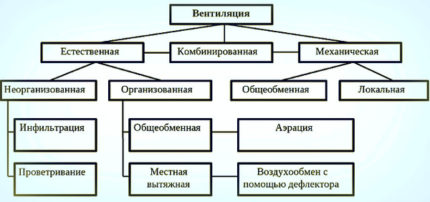
Indoor air recirculation parameters should be calculated based on the maximum allowable concentrations of NO2 and CO2 in the working area. Hoods should be placed above the burners, and the supply systems should be outside the radiation zone.
Premises with a high degree of explosion hazard (category A) must be equipped with a mechanical system of supply and exhaust ventilation. The upper levels of these rooms must be equipped with natural ventilation with deflectors. Outside hours, only natural or mixed ventilation is possible.
In category A rooms with liquefied gas circulation, forced ventilation must provide recirculation in both the upper and lower zones. Apertures of the system must be placed at a level of 30 cm from the floor.
The design of the emergency ventilation system should be carried out according to the standards of "SP-60.13330.2016" (paragraph 7.6). Its start-up should be carried out in automatic mode, as soon as the devices signal about exceeding the maximum permissible concentration of gas inside the room.
A hazardous concentration of gas in air is considered to be an indicator above 20% of the lower flammability concentration limit.
Ventilation in rooms with gas equipment
Designing a ventilation system designed for small-sized domestic premises with a boiler or gas stove will not cause difficulties. You can deal with it yourself.
Exhaust ventilation device
The action of exhaust ventilation is aimed at removing contaminated air from the room.
For its installation, the following components will be required: fan, duct, ventilation grille.
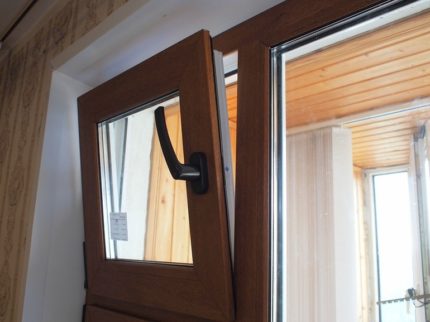
When choosing a fan, it is recommended to give preference to devices with check valve. This will protect against penetration of air from the outside.
Ducts are pipes made of PVC or other materials. Its diameter should match the size of the fan.
Choosing a ventilation grill, it is worth paying attention that now there are many models on sale that differ in size, execution, design. Therefore, it is easy to choose an option that is ideally suited to the style of the room.
Supply air recirculation system
Supply equipment provides fresh oxygen to the room with gas powered devices. The main element of such a system is the supply unit.
Its function is to supply oxygen from outside. At the moment of passage through it, the air is filtered, heated or cooled, if the device is additionally equipped with a recuperator.
For use in domestic needs, low power installations are suitable. The main advantage of this type of ventilation is noiselessness and comfortable operation. The simplest instance is a supply fan.

Air inlets are divided into the following categories:
- Electrical device for ventilation. It provides not only a filtration of the incoming oxygen, but also its heating.
- Wall inlet valve. It can work in automatic mode and have an additional oxygen filtration option. For installation, you will need to make a through hole in the wall of the building.
- Window supply valve. It can be either mechanical or automatic. It is installed in the sash of a plastic window. Minus - the probability of icing at extremely low temperatures.
All of the listed types of forced ventilation are easy to assemble and operate. You can install the design yourself.
Additional requirements for the supply system are put forward for rooms equipped with plastic windows that close hermetically.
The required hood power is calculated using the following formula:
M = O x 10where
O is the volume of air, which is calculated as follows:
O = H x L x S.
H - room height, L - length, S - width.
Supply and exhaust recirculation system
The mixed ventilation system provides a simultaneous outflow of spent oxygen and the flow of fresh into the room. Most often used in large objects and houses, the total area of which exceeds 100 m2 .
Installations equipped with a recuperator will reduce fuel consumption by up to 90% due to the heating of the incoming air flow.
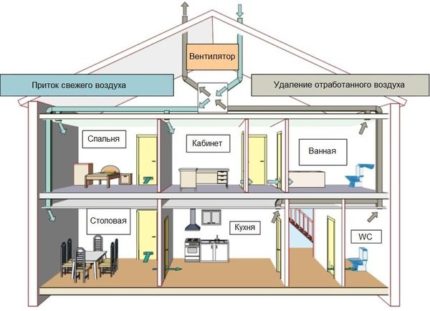
For ease of installation, combined systems can have a vertical, horizontal or universal orientation. Installation is carried out after the plastering and filling of the walls is completed, but before the installation of the ceiling, as the entire infrastructure will be hidden under it.
Usually in supply and exhaust system The following components are included: air intake valve, purifying air filter, air heater, recuperator, cooling unit, external grill.
Room ventilation withgas powered equipment
Rooms with gas equipment should be equipped with an exhaust ventilation duct. In addition, in the lower part of the door or wall of the adjacent room, excluding residential, it is necessary to make holes closed with a grill.
This will contribute to additional air circulation. It is allowed to use for this purpose the gaps between the floor and the door (section min 2 cm2).
Gas boiler room ventilation - basic requirements
Return draft contributes to the spread of combustion products, so it is not allowed in rooms equipped with a ventilation system. The oxygen circulation scheme in the boiler room is calculated based on the type and power of the installed equipment.
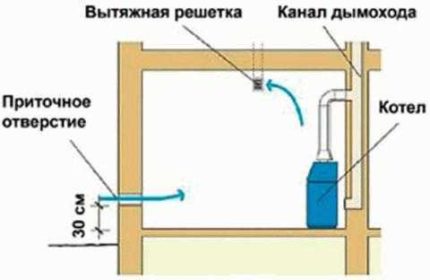
Basic requirements for the ventilation system in a gas boiler:
- The ventilation system must provide three times air exchange per hour.
- Air is supplied through special openings and channels.
- The boiler room ventilation is included in the general system of the house. Exhaust devices must be located in the upper areas of the walls of the room with the boiler or on the ceiling.
- When supplying oxygen from the inside, it will be necessary to ensure an inflow through the hole with a cross section of 30 cm2 per 1 kW of equipment power. If the air draft is external, the hole is a cross section min 8 cm2.
- Gas equipment should be installed against the wall with a gap of 10 cm.
In addition, it is worth remembering that the supply and exhaust devices must be placed in the opposite part of the room.
Ventilation in a room with a gas boiler
The basic requirements for ventilation systems at facilities with gas boilers or stoves are almost identical. Boilers equipped with a closed combustion chamber are equipped with a coaxial smoke channel. Through it, oxygen is supplied simultaneously from the street and combustion products are taken.
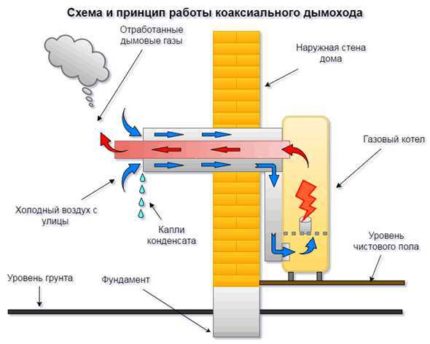
Technological rules for the design of a ventilation system for devices with a closed combustion chamber:
- The ventilation system must be airtight. Possible leaks carry high risks to human life and health.
- To ensure complete sealing, all joints in the system must be treated with a sealant that is resistant to high temperatures.
- High-quality thermal insulation will prevent possible overheating and fire of system elements.
- It is allowed to connect no more than two gas devices to one chimney, regardless of their location and remoteness from each other.
- Combustion products must be discharged into the chimney at a distancemin 50 cm at different levels.
- If oxygen is supplied from one level, the chimney must be equipped with a special cut, the height of which should be more than 50 cm.
The normative calculation of the required volume of air mass circulation should be carried out according to the following standards: outflow in the volume of three-time air exchange in the room withgas powered equipment, and the supply is the sum of the outflow volume and the volume of oxygen required for combustion.
When designing a ventilation system, the power of the equipment must be taken into account. The supply of oxygen should ensure the maintenance of the combustion process. Otherwise, the performance of the gas equipment is disrupted and soot is formed.
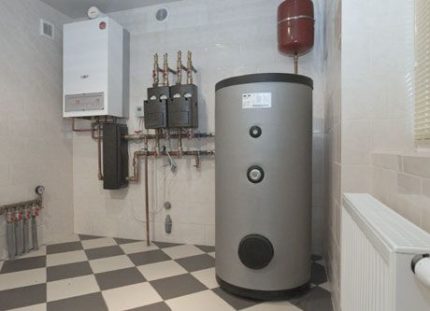
A constant flow of air prevents the discharge of the atmosphere inside the room and the drop in traction. When calculating the required volume of oxygen supplied, it is important to consider the volume of the room.
Technological rules for the design of a ventilation system for devices with an open combustion chamber:
- The room must be equipped chimneyproviding constant circulation.
- From the premises with gas boiler A general exhaust ventilation system is being equipped.
In the case of placing a gas boiler in the boiler room, it must be equipped with a continuously functioning supply ventilation, supplying oxygen from the street.
Ventilation of rooms with geysers
The main requirement for the design of ventilation infrastructure in a room equipped with a gas column is the presence of an exhaust pipe. It can be made of coaxial, steel or metal pipe.
The coaxial version is recognized as the most reliable, which leads to its wide distribution. Design features vary depending on the power of the column itself.
The chimney mechanism consists of the following elements:
- pipe (thermal insulation recommended);
- passage branch pipe;
- special fasteners, brackets;
- clamps (fastened at the junction of pipes);
- adapter connecting the column to the pipe;
- special window for revisions;
- condensate collecting tank;
- protective umbrella - mounted externally to protect against liquid, debris, etc.
The diameter of the pipe must be exactly the same throughout its length. Its total length should be at least 4 m. When choosing a design, climatic features should be taken into account. For cold regions, warming is recommended. The end point should rise to min 1 m from the roof.
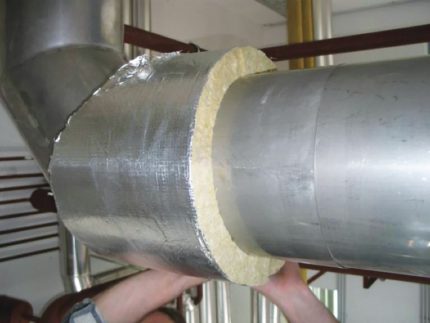
Ventilation system for rooms with a gas stove
The following are guidelines "SP-402.1325800.2018"that regulate the basic requirements for sufficient air exchange in rooms with gas stoves:
- minimum ceiling height should exceed 2.2 m;
- the presence of a ventilation duct. As an alternative, windows and windows can be used located in the upper part of the room;
- the doors to the room should have an open window of 0.25 m;
The most popular method of ventilation in the kitchen is the installation of hoods. A fan located inside will remove carbon monoxide and odors from the cooking process. Thus, the room will be forced ventilation.
A wide umbrella design ensures accurate directivity of air directly into the duct. The market offers a wide range of hoods, the prices of which vary depending on the brand, power and additional options.
All hoods are divided into 2 categories:
- Providing the removal of combustion products to the outside. Such extracts carry out a full exhaust oxygen removal to the outside and ensure the supply of fresh oxygen from the outside.
- Working on the principle of filtration and air recirculation. This type is not involved in the process of air exchange in a room withgas powered equipment. Air masses circulate exclusively inside.
The regulatory documents governing air conditioning and ventilation allow the use of mechanical ventilation such as inflow-blowing for rooms with a gas boiler, if this does not violate the general ventilation system of the building.
This paragraph implies that the exhaust duct cannot run into the shaft, blocking the ventilation grille, otherwise when the hood is turned on, the room with the boiler will not be ventilated.
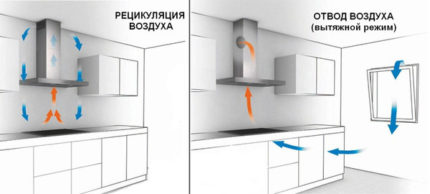
This problem can be solved by installing a special ventilation grill equipped with an outlet for a round duct.
Conclusions and useful video on the topic
See how to combine the ventilation system and the hood in the following video:
The main errors in the installation of natural ventilation:
The most difficult step in the ventilation device is its design. The system design should be developed taking into account all of the above norms and requirements determined by gas services. This will ensure safety for human life and high-performance equipment.
Have questions, find bugs or can you add valuable information to our material? Please leave your comments, share experiences, ask questions in the block below.

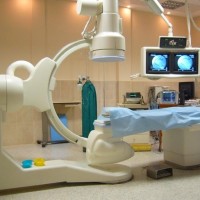 Ventilation and air conditioning for medical institutions: rules and features of the arrangement of ventilation
Ventilation and air conditioning for medical institutions: rules and features of the arrangement of ventilation  Air exchange in dentistry: norms and subtleties of arranging ventilation in a dental office
Air exchange in dentistry: norms and subtleties of arranging ventilation in a dental office  Requirements for air humidity in the catering unit: norms and rules for arranging ventilation in the catering unit
Requirements for air humidity in the catering unit: norms and rules for arranging ventilation in the catering unit 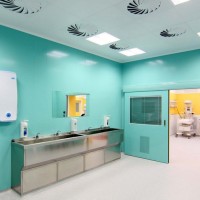 Cleanroom ventilation: design and installation rules for ventilation systems
Cleanroom ventilation: design and installation rules for ventilation systems 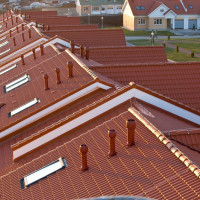 Soft tile roof ventilation: design and installation of soft roofs
Soft tile roof ventilation: design and installation of soft roofs 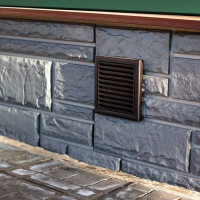 Natural ventilation in a private house: rules for arranging a gravitational air exchange system
Natural ventilation in a private house: rules for arranging a gravitational air exchange system  How much does it cost to connect gas to a private house: the price of organizing gas supply
How much does it cost to connect gas to a private house: the price of organizing gas supply  The best washing machines with dryer: model rating and customer tips
The best washing machines with dryer: model rating and customer tips  What is the color temperature of light and the nuances of choosing the temperature of the lamps to suit your needs
What is the color temperature of light and the nuances of choosing the temperature of the lamps to suit your needs  Replacement of a geyser in an apartment: replacement paperwork + basic norms and requirements
Replacement of a geyser in an apartment: replacement paperwork + basic norms and requirements